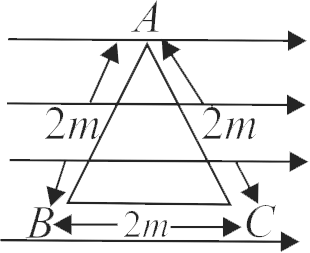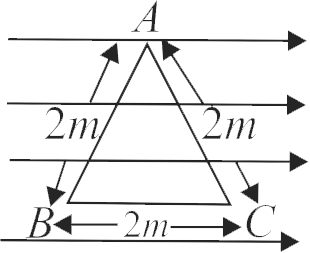359544
The electric field \({\vec{E}}\) between two points is constant in both magnitude and direction. Consider a path of length \({d}\) at an angle \({\theta=60^{\circ}}\) with respect to field lines shown in the figure. The potential difference between points 1 and 2 is
359544
The electric field \({\vec{E}}\) between two points is constant in both magnitude and direction. Consider a path of length \({d}\) at an angle \({\theta=60^{\circ}}\) with respect to field lines shown in the figure. The potential difference between points 1 and 2 is
359544
The electric field \({\vec{E}}\) between two points is constant in both magnitude and direction. Consider a path of length \({d}\) at an angle \({\theta=60^{\circ}}\) with respect to field lines shown in the figure. The potential difference between points 1 and 2 is
359544
The electric field \({\vec{E}}\) between two points is constant in both magnitude and direction. Consider a path of length \({d}\) at an angle \({\theta=60^{\circ}}\) with respect to field lines shown in the figure. The potential difference between points 1 and 2 is


